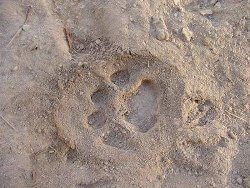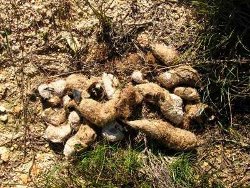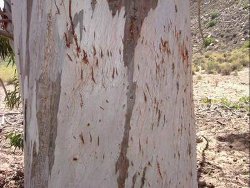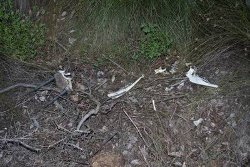Camera-trapping has proved to be a very effective way of estimating the numbers of elusive and nocturnal animals such as leopards, jaguars and tigers. It is a non-invasive and comparatively affordable option, since it does not require the capture, handling, or immobilisation of animals.
Photographs of leopards are an exceptionally useful tool, since each leopard has a distinctive spot pattern by which it can be identified, like our fingerprints. Camera traps can be deployed singly, but ideally a camera station should consist of two cameras opposite each other. Such double stations are used to compile "leopard identikits", photos of both an individual's left and right flanks, which are crucial in estimating the number of individuals in an area.
An added advantage of the camera traps is that they are like permanent fieldworkers, working day and night, in rain or sunshine. They are non-selective, capturing everything that moves, and this providing the ideal opportunity to gather data on other mammals. These photos give us information about prey availability, while forming part of an exciting collaboration with the University of Cape Town's Animal Demography Unit – namely a virtual mammal research mission, dubbed MammalMap. This project is similar to the reptile and butterfly atlas projects, SARCA and SABCA.
Here members of the public can act as "citizen scientists", uploading mammal photographs directly onto the web, thereby creating a huge database with mammal distribution records. Interestingly enough, it can also be that NOT getting a photograph of certain species in areas can be as important as obtaining these pictures, as questions are raised as to why these species are absent.
To register as a citizen scientist or to check out the excellent work being undertaken by these projects, click here. You can also join the VIMMA Facebook group where you can interact with other citizen scientists. Read more about these initiatives on the ADU website.
How do you decide on where to place a camera station?
Choosing the right camera trap site is very important. One must be quite sure that a leopard will pass by the camera at some stage, and because leopards are much more adept at using their rocky habitat than we are, one needs to select a site carefully.
Fortunately for us, it seems like most leopards are not too fond of bundu-bashing and will rather take the path of least resistance, such as well-used game paths, hiking trails, quiet jeep tracks, dry watercourses and the bottom of ravines. These areas normally prove to be good camera trap locations.
There are also a number of signs of leopard activity to look out for, and these are also instrumental in selecting camera trap sites.
Pug marks / tracks:

Leopard tracks are very distinctive and easily identifiable, although the tracks of smaller females or sub-adult males may be confused with that of caracal.
Scats / droppings:

The presence of hooves, claws and large bone fragments is telltale of leopard droppings. The scats are also prone to turning white in the sun because of the calcium content of the bones. Leopard scat may be confused with that of caracal, but caracal scats are generally smaller and contain mostly hair. If bones are present, the fragments will be relatively small.
Leopards use scats to demarcate and mark their territory, warning other individuals to keep away. Dominant animals therefore tend to defecate in very visible places, often on top of grass tufts and low bushes in the middle of or next to trails and jeep tracks.
Leopard scats are also collected for dietary analyses.
Scratch marks:

Leopards sharpen their nails on tree trunks in the same way house cats do. There are small glands at the base of the leopard's nails, the secretion of which is deposited on the bark as it scratches – another way of marking their territory.
Kill sites:

Leopards have exceptionally strong jaws and are known to eat almost the entire carcass, in contrast with caracal that often only eat the softer parts of the body and leaves the large bones. Although not encountered as often as tracks or scats, kill sites is telltale of leopard activity.
Intensive scouting for these signs is very important to determine the likelihood of a leopard walking past a possible camera trap site, and while looking for these signs, data on the tracks and scats of other mammals are also gathered.

















